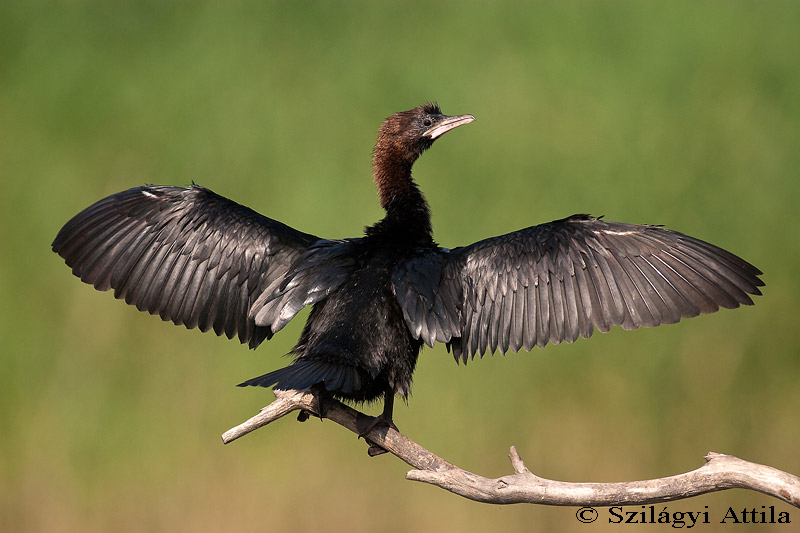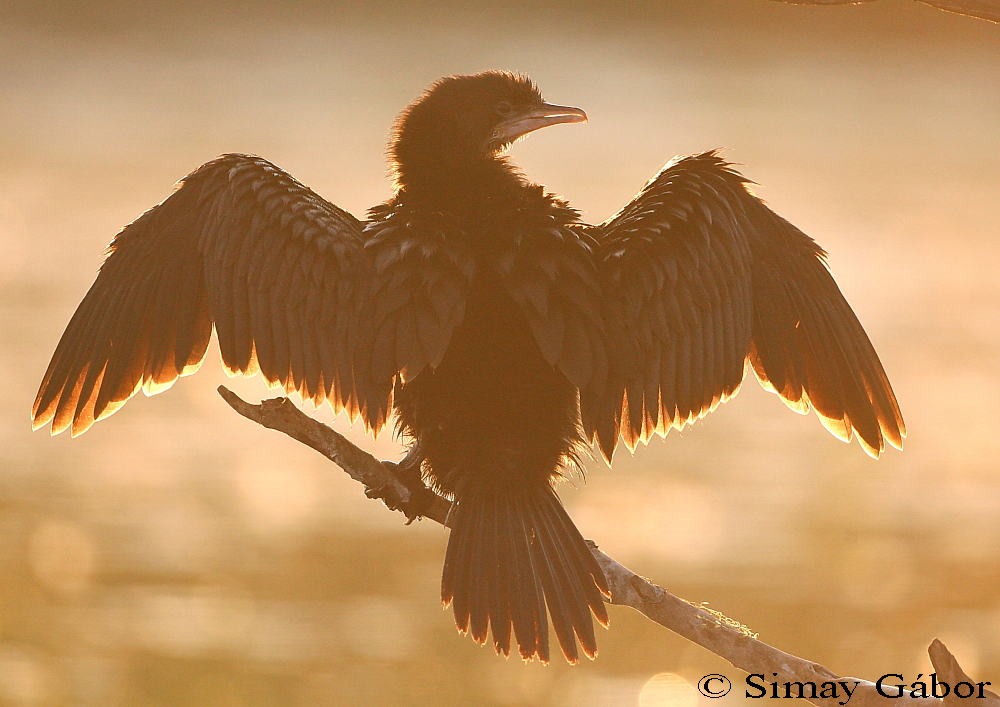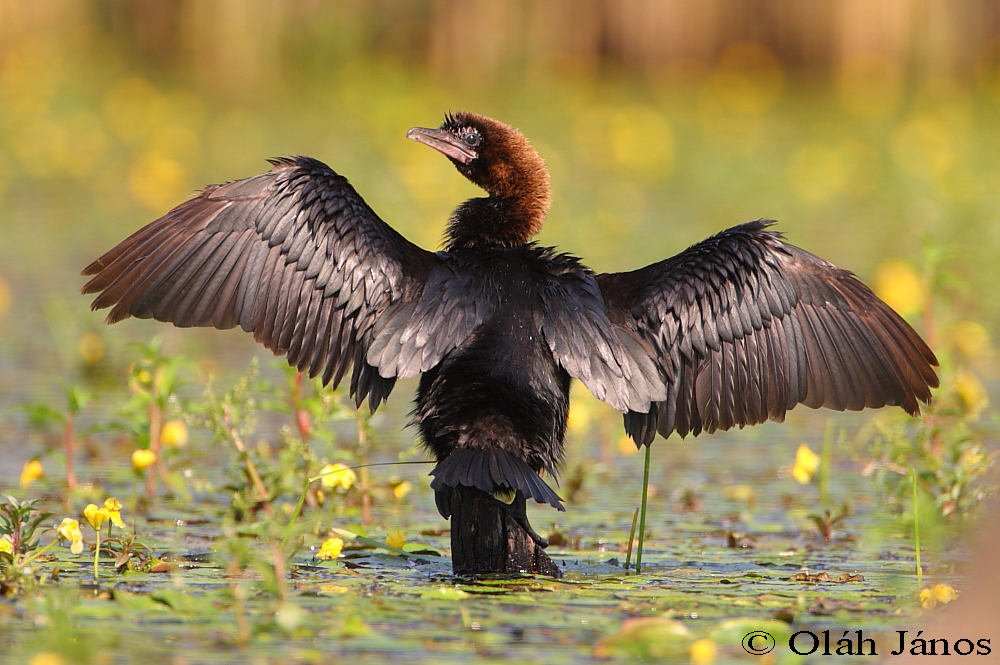Pygmy Cormorant (Phalacrocorax pygmaeus)
German: Zwergscharbe
French: Cormoran pygmée
Italian: Marangone minore
Czeh: Malý kormorán
Hungarian: kis kárókatona
Polish: Kormoran mały
Slovakian: Malý kormorán
Slovenian: Pritlikavi kormoran
Serbian: Mali vranac
Croatian: Mali komoran
Romanien: Cormoran pitic
Ukrainen: Баклан малий
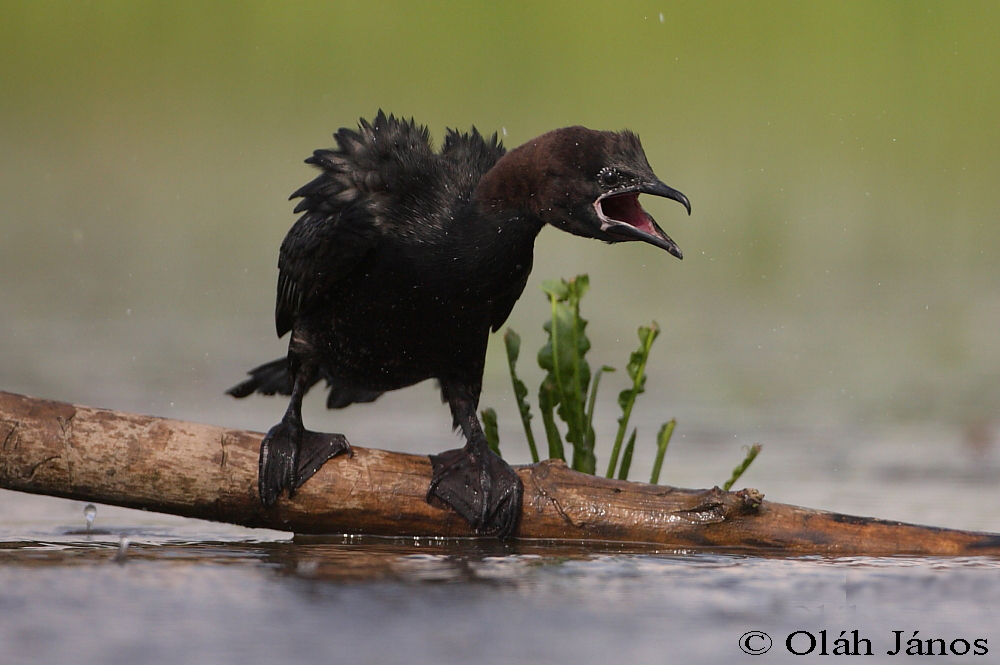
Pygmy Cormorant breeds in south-eastern Europe and south-western Asia. It is partially migratory, with northern populations wintering further south, mostly within in its breeding range. It is a rare vagrant to western Europe. It is a medium-sized green-glossed black bird, 45–55 cm long and with a 75–90 cm wingspan. It has a long tail and short thick bill. Adults have small white feather tufts on the head, neck and underparts in the breeding season (see image 3 below). Non-breeding birds have a white throat. The sexes are similar, but juveniles are duller and browner. This species is distinguished from the Great Cormorant and the Common Shag by its much smaller size, lighter build, and long tail. It feeds mainly on fish, often hunting in groups, and perches in trees between fishing expeditions.
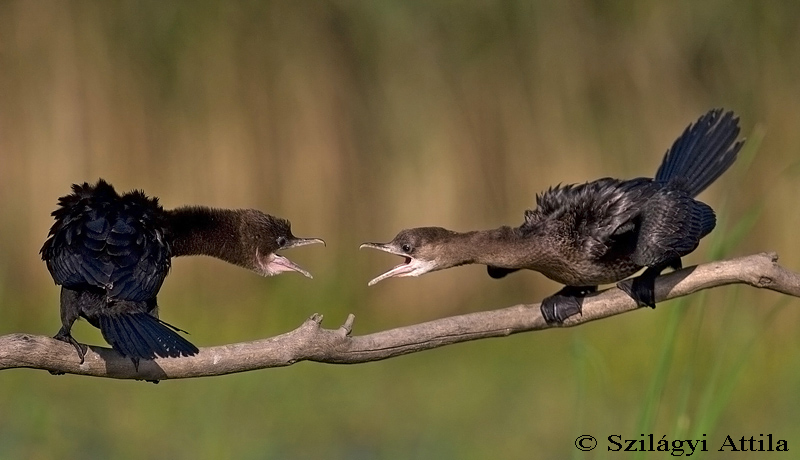 The Pygmy Cormorant breeds colonially in wetlands with still or slowly flowing fresh water in coastal deltas and well-vegetated freshwater lakes. It builds a nest of grass and twigs in a low tree or reedbed, into which it lays its 3-6 eggs. Both parents incubate for 27–30 days, and nestlings become independent after 70 days.
The Pygmy Cormorant breeds colonially in wetlands with still or slowly flowing fresh water in coastal deltas and well-vegetated freshwater lakes. It builds a nest of grass and twigs in a low tree or reedbed, into which it lays its 3-6 eggs. Both parents incubate for 27–30 days, and nestlings become independent after 70 days.
The species has a large global population estimated to be 85,000-180,000 individuals. The estimated European population (75-94% of the global breeding range) is now 28,000-39,000 pairs, considerably higher than the 13,000 pairs estimated in 1996, with an estimated 8,000-12,000 breeding pairs in Azerbaijan and 11,500-14,000 breeding pairs in Romania. While this species was classified as Near Threatened 15 years ago its population increased and now it is stable. In Hungary it started to breed again as recently as 1991 in the Hortobágy National Park but now spread through the country and the total breeding population is around 400-600 pairs. More information here!
How to photograph them: You can photograph Pygmy Cormorant from late April to early September alongside many other waterbirds within the World Heritage Hortobágy National Park in Hungary from a specially designed hide located in a fishpond. For more information check out the Sakertour website!
